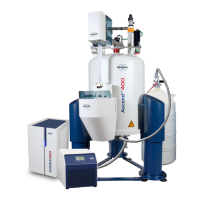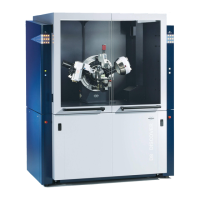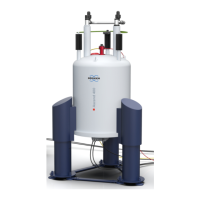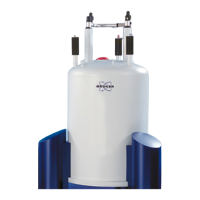¹³C Spectrum with Proton Decoupling
H171804E_14_001 67 / 86
9 ¹³C Spectrum with Proton
Decoupling
This chapter describes the acquisition and processing of a one-dimensional
13
C NMR
spectrum. The standard Bruker parameter set C13CPD includes the pulse sequence zgpg30
shown in the figure below. The
13
C channel consists of the recycling delay, a RF pulse, and
the acquisition time during which the signal is recorded. The pulse angle is shown to be 30°.
The two parameters, d1 and p1, correspond to the length of the recycle delay, and the length
of the 90° RF pulse, respectively. The
1
H channel consists of two decoupling pulses which
can be power gated. The first pulse, an NOE build-up pulse during the recycle delay, may be
of lower power than the second pulse during the acquisition which is the true decoupling
pulse. This can be useful to avoid RF heating on salty samples or probes where a higher
decoupling power can be problematic.
The time intervals depicted in the pulse sequence diagrams are not drawn to scale. For
example, d1 is typically a few seconds, while p1 is typically a few microseconds in length.
The sample to be used is 30 mg of Menthyl Antranilate in DMSO-d6.

